
Category: Cooperative Extension
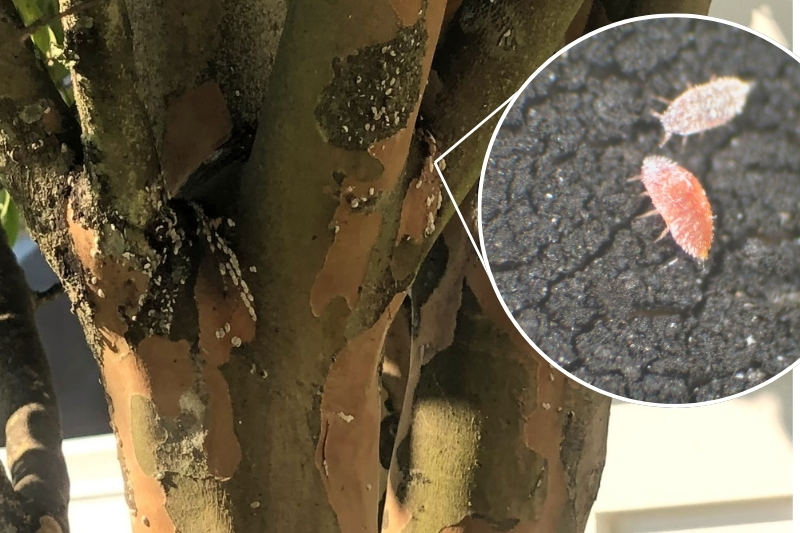
Beauty and the Bugs
May 29, 2024 Written by Molly Schafer Photos by Michele Walfred and courtesy of UD Cooperative Extension; Jim Robbins, University of Arkansas Cooperative Extension; Bugwood.org; and Mengmeng Gu, Texas A&M University Cooperative Extension
Crape myrtles, an ornamental tree popular in landscapes throughout the state of Delaware, are prized for their beauty, exfoliating bark in shades of silver and cinnamon, and long-lasting flowers in a variety of colors.
The crape myrtle bark scale, an invasive insect, is less well-known. First spotted in Delaware in 2020, the bug threatens the beauty of these beloved trees. The pest is now active in Sussex and Kent counties but is yet to be seen in New Castle County.
“Crape myrtle bark scale is not known to kill trees,” explained Brian Kunkel, a specialist with the University of Delaware Cooperative Extension. “But it can decrease the plant's aesthetic appearance.”
The insects exude honeydew, a sticky substance that encourages the growth of sooty mold.
“A heavy infestation can turn the tree black from the sooty mold or white from scales’ felt-like coverings,” Kunkel said. “It can almost look like the tree is coated in snow.”
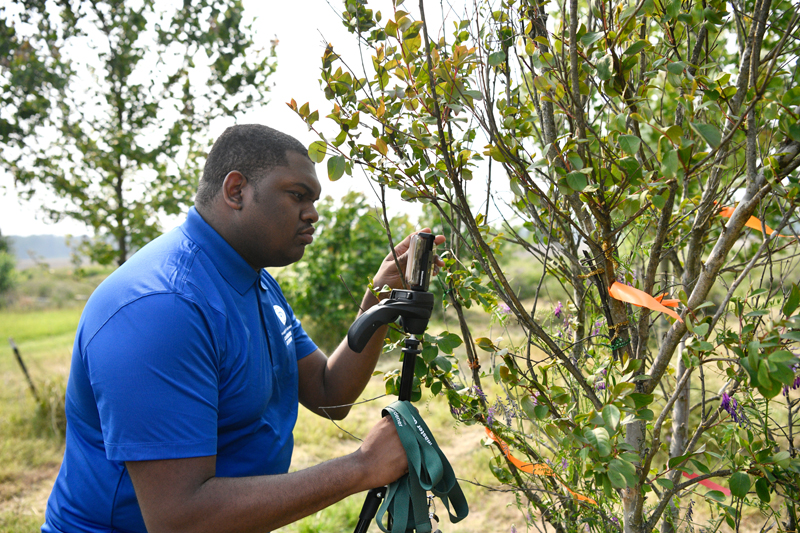
Both the crape myrtle tree (Lagerstroemia) and the bark scale are native to Asia. The tree was introduced to Charleston, South Carolina, in 1790 by French botanist André Michaux. The insect was first reported in Texas in 2004 and has spread to 11 states and the District of Columbia.
Kunkel is collaborating with Stanton Gill from the University of Maryland to study the pest in the mid-Atlantic. The crape myrtle bark scale lifecycle is temperature-dependent and varies by region. Data from the Southern U.S. may not apply to the mid-Atlantic. Kunkel and Gill are leading the charge in the region. Their goal is to protect crape myrtle trees without damaging essential pollinator populations. First, they need to identify the optimal time to apply chemical treatments. Timing is everything when treating for crape myrtle bark scale.
Scale insects, like the crape myrtle bark scale, live beneath a protective wax covering called a scale. The scale protects the insects from direct contact with insecticides, so an infestation is challenging to treat.
“The key is knowing when the nymphs, called crawlers, will emerge,” Kunkel said. “In its native range, there can be up to four generations in a year. In the southern U.S., research suggests three generations, but no one has worked with crape myrtle bark scale in the mid-Atlantic before.”
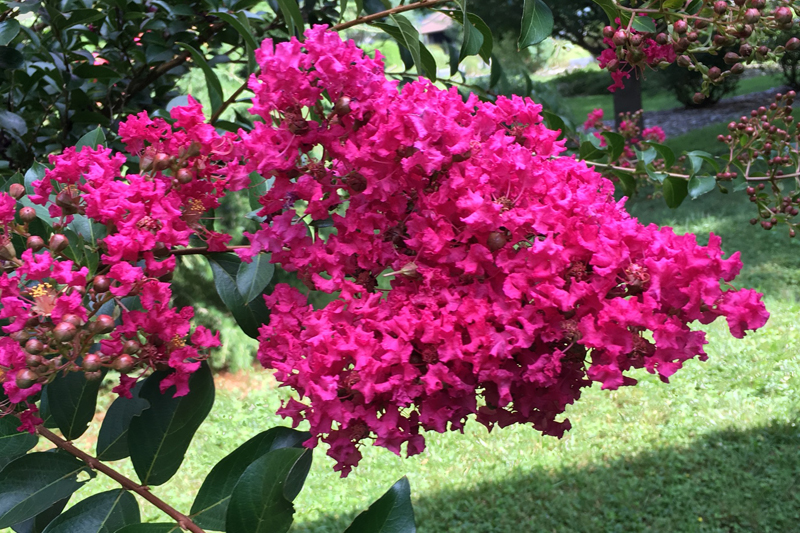
Without a protective covering, crawlers are vulnerable to chemical treatments called insect growth regulators (IGR). IGRs have less impact on beneficial insects like lady beetles and lacewings, the CMBS’s natural predators.
“IGRs can have small impacts on natural enemies, but we’re not aware of any impacts on pollinators,” Kunkel said. “To use IGRs to the best of their efficacy, we need to know when crawlers are active.”
But finding crawlers isn’t that easy; the larvae are nearly invisible to the naked eye.
With the help of UD extension agent Tracy Wootten and a team of student interns, Kunkel monitors UD’s collection of mature crape myrtle trees for crawlers. The trees, purchased with funding from the USDA, have varying levels of infestation. They are housed at Carvel Research and Education Center, UD’s 347-acre agricultural research experimental station in Sussex County.
In April 2023, the extension team laid a trap. Hoping to catch crawlers, they wrapped the branches of infested trees with clear double-sided tape. Kunkel and the interns checked the tape weekly, searching it with microscopes in the hope of finding an unlucky crawler. The tape remained empty for five weeks.
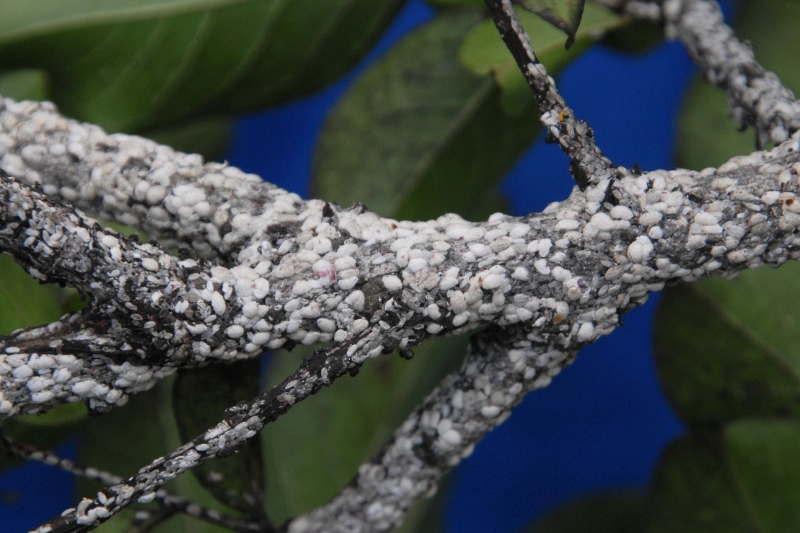
By the first week of June, the team saw three crawlers. The second week, they saw more, and by the third week of June they were finding hundreds, Kunkel said.
Kunkel’s team continued checking the taped trees throughout the summer. The findings are preliminary, as the ongoing project has gathered only one year of data.
“It looks like there are two generations of crape myrtle bark scale a year for Delaware and the mid-Atlantic” Kunkel said. “The first generation emerges around the beginning of June and the second around the middle of August. Every year is different; some years are warmer or drier than others, and that can affect insect behavior and activity. When we have a few years of observations, we’ll feel more confident.”
Eventually, the team will work with nurseries to conduct insecticide trials to study chemical alternatives to insect growth regulators with nurseries in Delaware and Maryland.
“We’d like to find environmentally and ecologically responsible options,” Kunkel said.
As part of UD’s land-grant mission, findings are shared with the green industry as well as the general public.
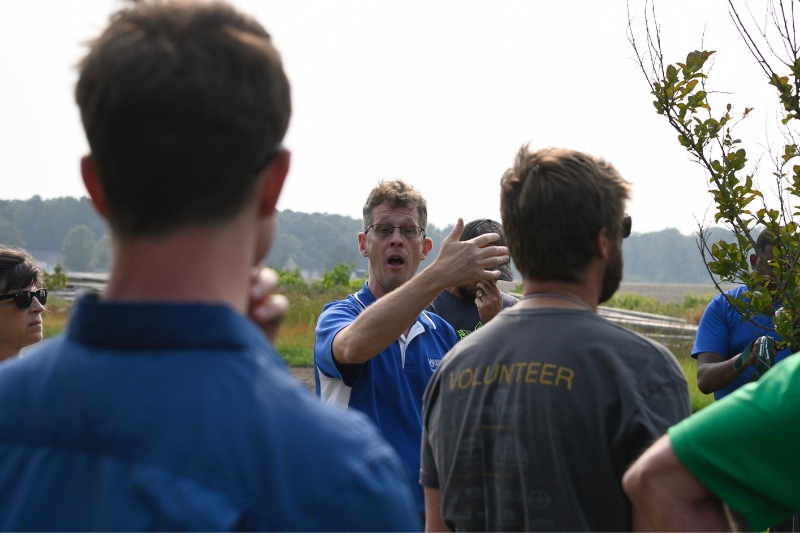
“The commercial landscapers and industry professionals are now very familiar with crape myrtle bark scale,” Wootten said. “Cooperative Extension has emphasized the crape myrtle bark scale in our workshops and continuing education since it was discovered here in 2020.”
So what should you do if you suspect crape myrtle bark scale on your tree?
“Crape myrtle bark scale does not harm the overall health of the trees and may not need treatment,” Kunkel said. “Natural predators, lady beetles and lacewings often keep populations suppressed.”
Indiscriminately spraying trees can kill the bark scale’s natural enemies, often without impacting the scales. Kunkel does not recommend using neonicotinoid pesticides. While neonicotinoids are effective against the crape myrtle bark scale, these insecticides may contribute to the decline in pollinator populations.
“Then you’ve created an enemy-free space, meaning there is nothing to eat the scales, and their populations will explode,” Kunkel said. “However, treatment can preserve the beauty of your tree. Left unchecked, crape myrtle bark scale can reduce flowering. Honeydew covers the trunk and branches, which are quickly colonized by unsightly black sooty mold.”
Small groupings of crape myrtle bark scale can simply be squashed or scraped off the tree. Empty scales remain on a tree even after the insects have died, so it can be difficult to gauge the level of active infestation.
So if you spot these invasive insects on a tree near you, don’t fret. Delawareans can contact the UD Cooperative Extension’s garden helpline. This free resource is available year-round and offers help on a variety of gardening topics.
Help UD track this insect's movement in New Castle County. To report any potential sightings of crape myrtle bark scale, call the New Castle County Master Gardeners at 302-831-8862.
